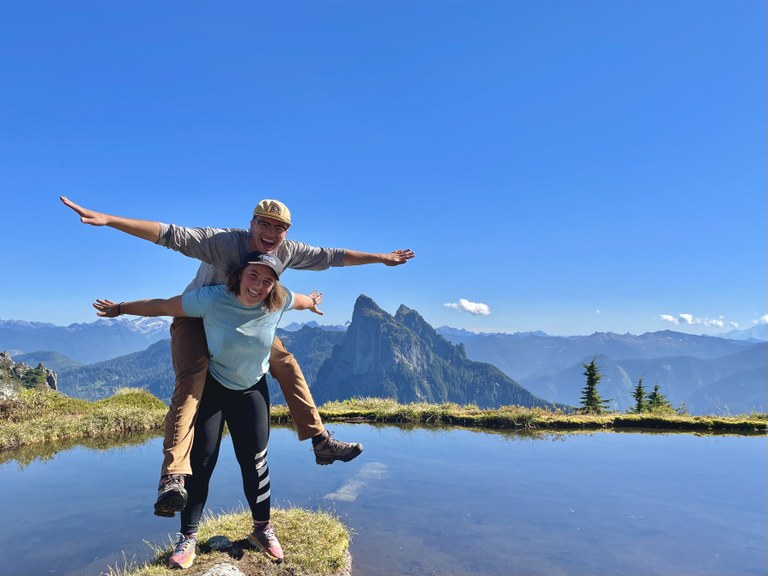 Washington Trails
Association
Washington Trails
Association
Trails for everyone, forever
Recommending a hike to a friend: easy, right? Not quite. Remember these factors next time a friend, coworker or family member comes to you seeking advice for where to hike. By Joe Gonzalez.
Are you an avid hiker? Do your trail shoes see more action than your casual attire, and do you keep a rotating batch of hiking snacks in your backpack at all times? If so, then chances are you’ve been asked an age-old question: Do you have any hikes to recommend?
Being asked for advice on your hobby is exciting. As an experienced hiker, you probably immediately think of your favorite trails. However, when you’re offering tips to your friends and family, you have to do some thinking about what will work best for the person who’s asking. Before you delve into your favorite trails, here are a few things to consider to help you give great recommendations.
Ask questions: Begin by figuring out what your friend is looking for. A quick jaunt? A physical challenge? How far do they want to travel to the trailhead? What sorts of roads do they feel comfortable with?
Set them up for fun: What’s interesting for you might not always be interesting for them. Ask them what geographic features excite them to help narrow down your recommendations. Learn about what experience they’re hoping for. Popular trails can provide a social experiences or a sense of security, whereas less-traveled areas can provide solitude. Understanding their preferences will help you find the perfect trail for them.

Having fun on trail! Photo by Lucas Cook.
“Difficult” is relative: If you’ve been hiking for a while, it might be easy to forget how much you had to learn and what once felt challenging. Think about the length, elevation change and shape of a trail. (It’s easier to turn around early on an out-and-back than a loop hike, for instance.) Ask your friend about what they would find challenging — maybe they don’t mind a steep climb, but hate exposure or loose surfaces. Knowing that in will help you suggest a trail that’s the right effort. Trails with water crossings, loose rocks or blow-downs can provide extra risk. Make sure they know what to expect.
Help them plan ahead: You will probably think of things less-experienced hikers won’t. Keep preparation at the forefront of your mind. Before making a suggestion, think about if conditions are favorable at this time of year or whether specialized gear is needed. Trips that require ice axes are probably a no-go for new hikers. On the flip-side, recommending gear like trekking poles can make a trip more pleasant. Consider lending them gear if they’d like to try something like trekking poles out.
Define what the word “hike” means to them: When does a walk become a hike or a trek? The hiker defines what a hike is. Maybe all your friend wants is a nice stroll in a local park. Remember to offer a variety of options.
What about passes? Different areas have their own rules about passes or permits. If your friend has a specific pass, help them figure out where that will let them go. If they want to go somewhere where they don’t have the required pass or permit, help them figure out what they need.
People don’t know what they don’t know: If somebody is asking you for a hike idea, they probably see you as an authority on the subject. You didn’t become that person overnight, however. You had to learn it all too. Be available to answer their questions and help set them up for a great and responsible day on trail. Meeting a hiker where they are at and understanding their needs will help you bridge the gap from boot to trail.